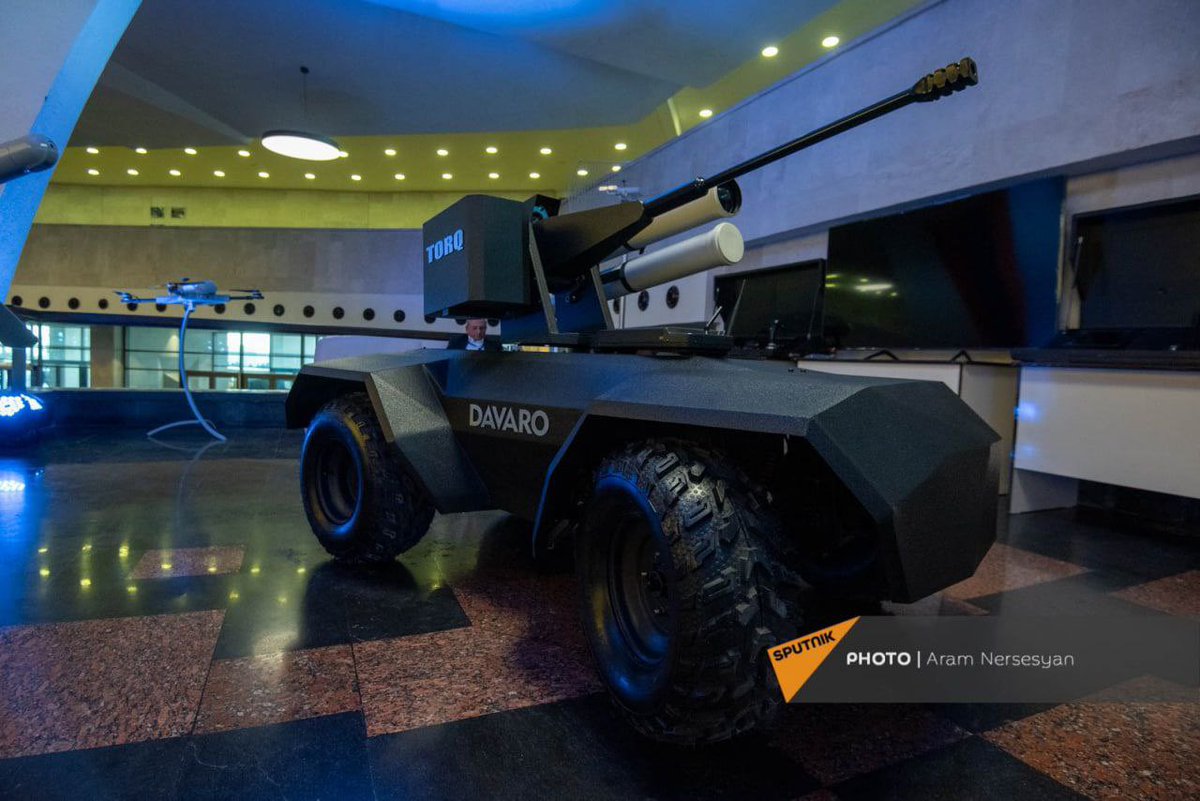Armenian Tech Innovators Reveal Ground-Based Remote Control System Transforming Unmanned Operations

Armenian Tech Innovators Reveal New Ground-Based Remote Control System
A technological breakthrough has emerged from Armenia as a local enterprise introduces an advanced ground-operated vehicle designed for remote control. This apparatus represents a significant step in the development of unmanned land systems within the region, highlighting the country’s growing capabilities in sophisticated mechanized solutions.
The vehicle, sharing its name with a term signifying power and might, embodies a strong emphasis on remote operational control, catering to scenarios requiring distance management and tactical precision. This innovation marks the country's advancing role in the development of autonomous or semi-autonomous platforms capable of enhancing operational flexibility and safety in various environments.
Designed and constructed by a specialized firm based in Armenia, the project showcases the company’s technical proficiency in integrating modern control systems with robust ground vehicle platforms. The implementation of such equipment reflects a broader strategic trend toward remotely managed systems, which offer distinct advantages in reducing personnel risk and increasing operational reach.
Technological Foundations and Design Philosophy
This apparatus represents the culmination of refined engineering efforts to marry advanced remote guidance technologies with durable hardware capable of navigating terrestrial terrains. Leveraging state-of-the-art control interfaces, it enables operators to maneuver the vehicle with precision from a safe distance, thereby facilitating tasks that might be hazardous for direct human involvement.
Crucially, the system features a communications suite engineered for reliable real-time control, ensuring seamless data transmission over various ranges in potentially complex operational theaters. Such reliability is fundamental to maintaining control fidelity and mission effectiveness, signifying the importance of integrated communication technologies in modern unmanned vehicles.
Beyond mere mobility, the vehicle is conceived with adaptability in mind. Structural design considerations permit the integration of multiple payloads depending on mission parameters, which could range from reconnaissance functions to more specialized applications requiring modular equipment configurations.
Strategic Significance and Industry Context
The initiative emerges amid a global increase in unmanned ground systems development, reflecting the shifting defense and operational paradigms favoring remote engagement and autonomous mission support. This addition to the portfolio of homegrown technologies underscores national efforts to cultivate domestic expertise in remotely operated platforms, reducing reliance on external suppliers and fostering technological sovereignty.
Furthermore, the apparatus aligns with current trends emphasizing unmanned system deployment for force multiplication and enhanced situational awareness. Such platforms serve as force enablers, capable of conducting tasks that may pose significant risks to personnel, thereby revising tactical doctrines to include unmanned assets as integral components of modern operational frameworks.
Within the competitive landscape of unmanned system manufacturers, the introduction of this vehicle from Armenian developers adds an important dimension, demonstrating the region’s commitment to advancing tech innovation and contributing to the global discourse on autonomous and remotely operated machinery.
Implications and Future Outlook
This development not only illustrates technological progress but also signals possible shifts in operational strategies where remote control capabilities provide critical advantages. The successful deployment of such systems can enhance mission safety, extend operational endurance, and open new avenues for unmanned applications in challenging environments.
Looking ahead, the potential evolution of this platform may include the incorporation of advanced sensor suites, AI-driven navigation aids, and enhanced autonomy features to further broaden operational scope. As innovation pushes boundaries, continued refinement and field testing will be paramount to validate system resilience and effectiveness in diverse conditions.
In sum, this progress offers a compelling example of innovative engineering meeting practical needs, positioning the developers as noteworthy contributors to the emerging field of ground-based remotely managed vehicles, and affirming the region’s capacity to cultivate sophisticated defense and operational technologies.
